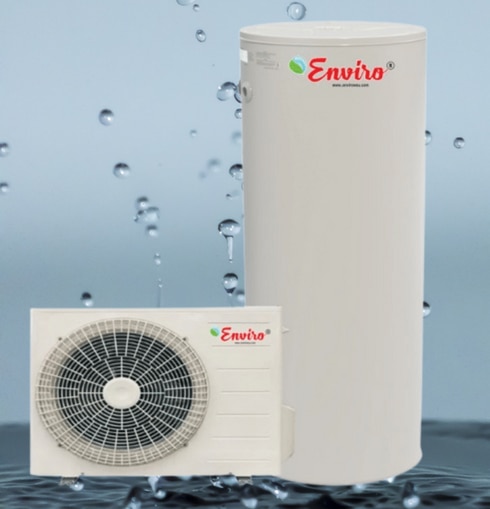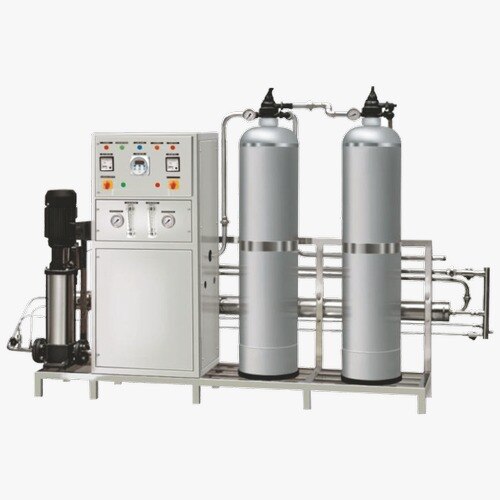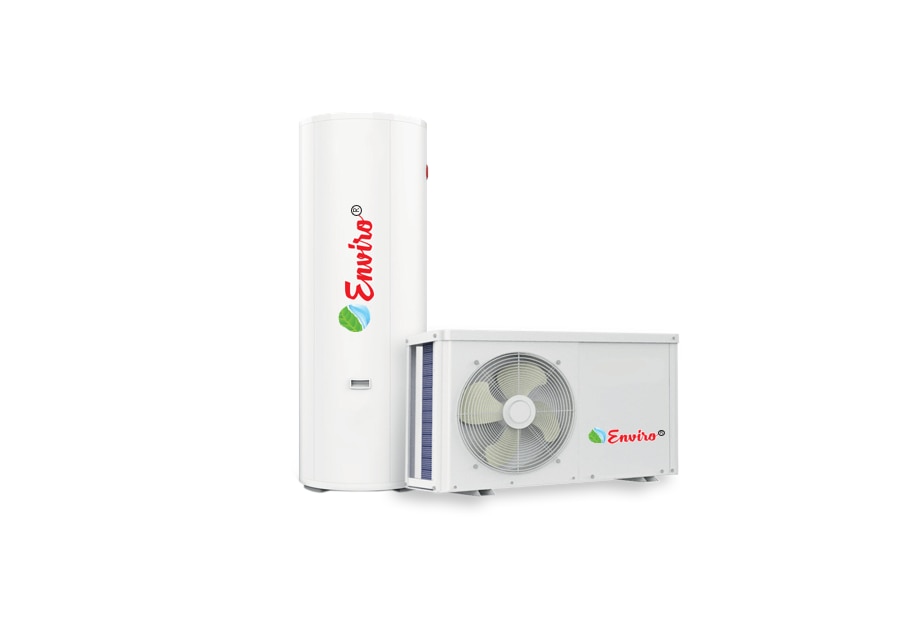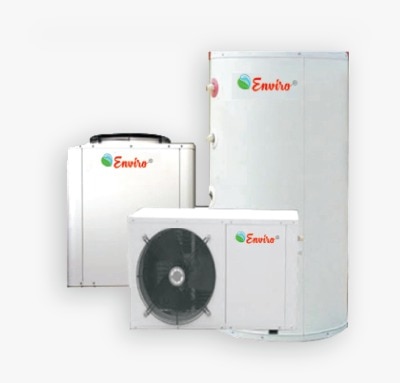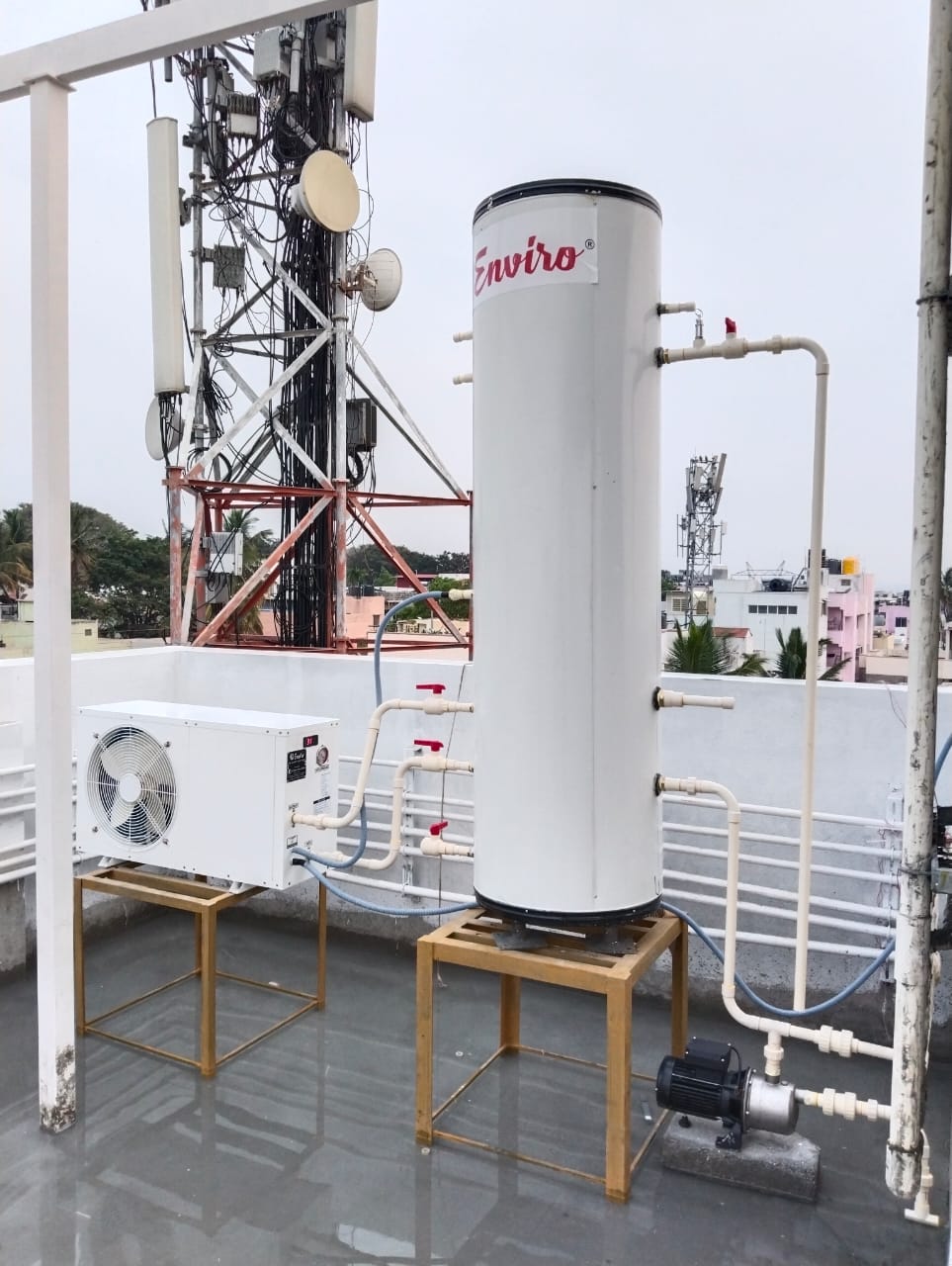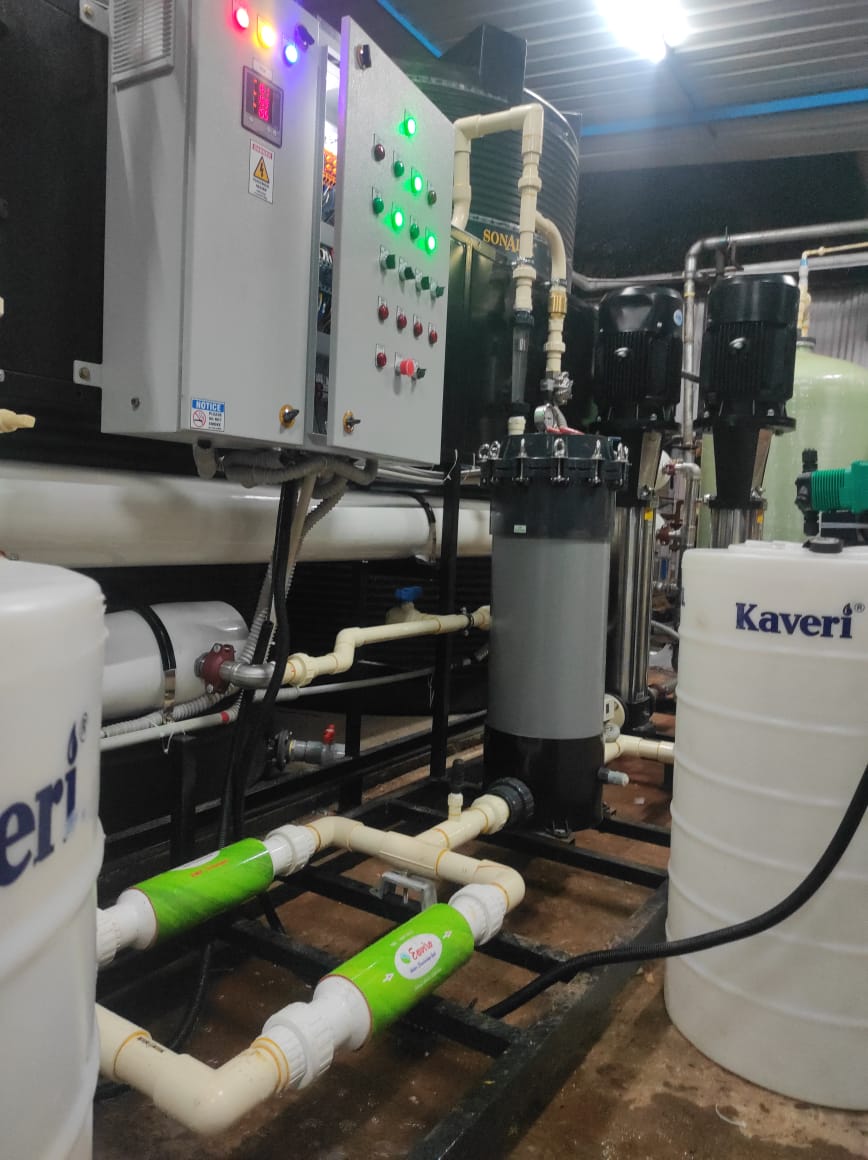Ambient air is drawn in by the fan and passed over the evaporator. The evaporator cools the air, i.e. it extracts the heat it contains. In the evaporator, the heat removed is transferred to the working fluid (refrigerant). With the aid of an electrically driven compressor, the absorbed heat is “pumped” to a higher temperature level through an increase in pressure and given off to the heating water via the condenser (heat exchanger). In so doing, the electrical energy is used to raise the heat of the environment to a higher temperature level. Due to the fact that the heat energy extracted from the air is transferred to the heating water, this type of appliance is referred to as an air source heat pump. The air source heat pump consists of the following main components: Evaporator, fan and expansion valve as well as the low-noise compressor, the condenser and the electric control unit consisting of branded equipment for controlling and safety devices for protection of Compressor, pump etc. against any variations in voltage, current. Also consists of trip devices, if any parameters not available for smooth running of Heat Pump. The Heat Pump is connected to a Hot Water Storage Tank which is made of 4 mm M.S. Sheet, is insulated with rock wool, for maximum temperature sustenance.. Once the temperature in Tank reaches 55°C the machine automatically shuts down and again re-starts when the temperature reduces to 52°C. There is 24 x 7 uninterrupted Hot Water for the whole year, unconditional to any seasons or weather, unlike solar heaters which are completely dependent on Weather conditions.
Send Message